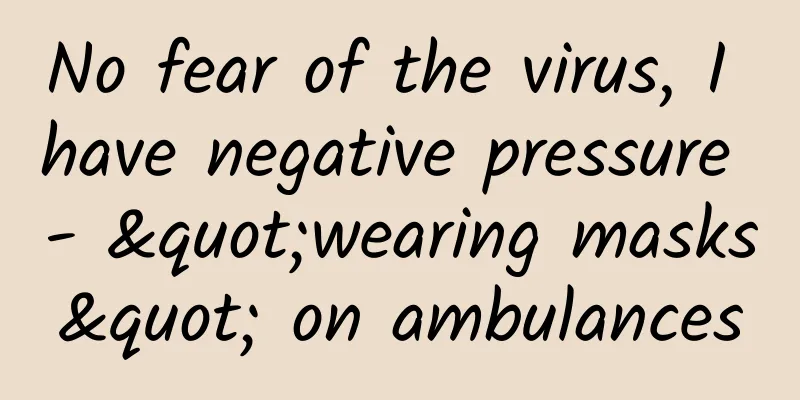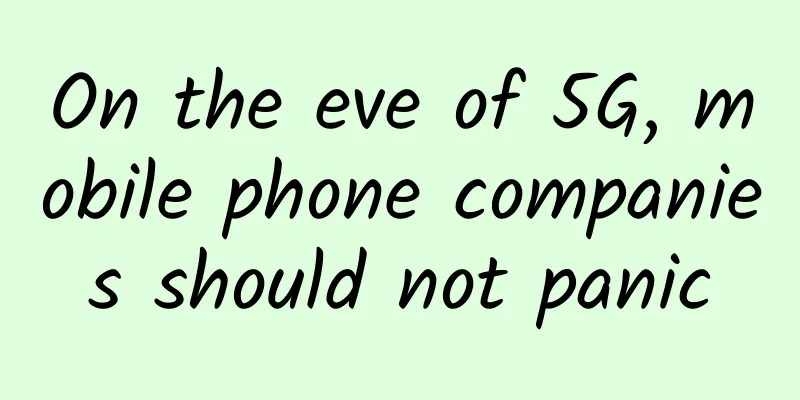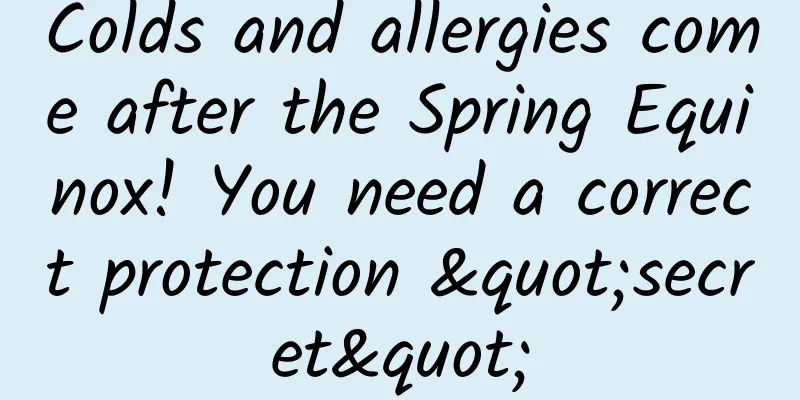No fear of the virus, I have negative pressure - "wearing masks" on ambulances

|
|||| Compiled by New Media Editor Lai Tianying The sudden outbreak has made masks, protective clothing and disinfectants in short supply. In fact, it is not only these that have become in short supply, but also "negative pressure ambulances". During the special period of the outbreak, in order to prevent the spread of the virus, this negative pressure ambulance has become the "Noah's Ark" for transporting patients. Negative pressure ambulances are similar in appearance to ordinary ambulances, but why can only negative pressure ambulances be used to transport COVID-19 patients? In addition to negative pressure ambulances, in what other situations do negative pressure environments need to be used? Let's talk about it. ◈ ◈ ◈ "The Strongest Mask" - Negative Pressure Ambulance Compared with ordinary ambulances, the biggest difference of negative pressure ambulances is reflected in the word "negative pressure". In fact, we can understand negative pressure ambulances as special ambulances with "masks" on ordinary ambulances. It can completely "isolate" the air inside and outside the car, and is mostly made to deal with sudden infectious diseases such as the new crown. Negative pressure ambulances have an independent space, in which the air inside and outside the vehicle is exchanged after disinfection and filtration. We call this space a negative pressure cabin, which has good isolation, corrosion resistance, ventilation, and bacteria resistance. Therefore, the negative pressure cabin is safe and hygienic, and it is most suitable to use it to transport infectious patients, as it can prevent the virus from spreading again without leaking. ▲The internal structure of the negative pressure ambulance (picture from Sina Weibo-槽值) The key to "negative pressure" lies in two aspects. First, there is a special air recovery port on the stretcher in the vehicle where the patient is located, which will extract all the air exhaled by the patient, filter and disinfect it and discharge it outside the vehicle. The atmospheric pressure in the medical cabin in the vehicle is 10-30Pa lower than the outside air, so the polluted air in the vehicle will not flow out of the vehicle through other gaps, and will not pollute the surrounding environment. Secondly, the negative pressure in the patient cabin of a negative pressure ambulance refers to the relative pressure difference between the cabin and the outside atmosphere, which is mainly achieved by the exhaust fan actively exhausting air to the outside atmosphere and the sealing treatment of the cabin. Before the air in the patient cabin is discharged to the atmosphere, it is generally filtered by a high-efficiency filter, which can effectively reduce the spread and pollution of pathogenic microorganisms to the ambulance and the outside environment. This method is only a physical isolation method. Bacteria and viruses are blocked on the surface of the high-efficiency filter and cannot be killed. The cabin should be disinfected after the ambulance is used. The requirements of the Ministry of Health: 20 air changes per hour, the negative pressure value is between 10Pa and 38Pa, and the filtration separation rate is 99.9%. ▲Negative pressure ambulance exhaust purification (Photo from Tencent News) Negative pressure ambulances can effectively isolate infected people. Since the air entering the negative pressure cabin is fresh and there is no circulating air, pathogens have "nowhere to hide" in the cabin, just like a "sterile room". Therefore, when treating and transporting infectious diseases and other special diseases on a negative pressure ambulance, the chance of cross-infection between medical staff and patients can be minimized, while also avoiding infection of more people, achieving true "safe isolation". ◈ ◈ ◈ Negative pressure wards are a hero in infectious disease treatment In addition, most medical staff are familiar with negative pressure wards, which are used to isolate the source of infection and block airborne transmission of infectious diseases. Negative pressure wards mainly treat patients with infectious diseases that are transmitted through aerosols and droplets through the respiratory tract. Like negative pressure ambulances, the air pressure inside the ward is lower than the air pressure outside the ward. In terms of air circulation, only fresh air from outside can flow into the ward, and the air contaminated by the patient in the ward will not leak out, but will be discharged to a fixed place in a timely manner through a special channel. In this way, whether it is opening the delivery window to deliver items, opening the ward door when people walk, or various gaps in the ward that may cause air circulation, only clean air from outside can flow into the ward, and the air contaminated by the patient in the ward will not leak out. Professional negative pressure wards are equipped with professional fresh air equipment. The fresh air entering the ward needs to be fully purified to ensure that the cleanliness, PM2.5, temperature and humidity in the room reach high-quality levels. The exhausted air also needs to be fully treated to ensure complete safety before it can be discharged into the external environment. The "Guidelines for the Design of Emergency Treatment Facilities for New Coronavirus Pneumonia (Trial)" stipulates that each negative pressure isolation ward must be equipped with a fresh air system with an air volume of 1,500 cubic meters per hour. The supply air should be treated by three levels of coarse, medium and sub-high efficiency filters, and two exhaust systems should be installed, one of which is equipped with a high efficiency filter. The exhaust air should be filtered by a high efficiency filter before being discharged. The high efficiency air filter for exhaust air should be installed at the exhaust vent of the room. A sealing valve should be installed on the supply and exhaust pipes of each negative pressure isolation ward, and a sensor system should be installed to control the variable frequency fan to ensure that the negative pressure ward, the buffer room and the corridor maintain a negative pressure of 5Pa to ensure the safety of the negative pressure ward. ▲Components of a negative pressure ward (picture from Environmental Protection Guide) Of course, the negative pressure ward is not just a room, but consists of three parts: the ward, the buffer room, and the bathroom. From the inside to the outside, the pressure difference in each room is -5Pa. ▲The internal structure of the negative pressure ward (picture from Environmental Protection Guide) Some people may worry that the negative pressure in the room will cause the patient to have difficulty breathing? Of course not. Although the pressure is lower than that outside, it is only 15Pa less. The atmospheric pressure on the ground is generally around 100KPa. The change of several tens of Pa will not affect the patient's breathing at all. On the contrary, through the careful care of the fresh air system, the patient can better recover and get rid of the disease. ◈ ◈ ◈ Good news for special infection surgery—negative pressure operating room Another type of negative pressure environment is the negative pressure operating room. In general, in addition to treating patients with infectious diseases transmitted through the respiratory tract, negative pressure operating rooms also treat patients undergoing special infection surgeries where pathogens are highly infectious and can cause serious pollution to the surrounding environment, such as surgery for patients with Pseudomonas aeruginosa-infected wounds, gas gangrene, and tetanus. Many large general hospitals also have negative pressure operating rooms in their cleanroom operating rooms. ▲The patient undergoes surgery in a negative pressure operating room (Photo from Shangguan News) The principle of negative pressure operating room is similar to that of negative pressure isolation ward, but they differ in layout and usage functions. Generally, negative pressure operating room has independent entrance and exit, and buffer room should be set at the entrance and exit. The buffer room is equipped with a special blood and body fluid spray treatment box, occupational exposure treatment box, etc., to facilitate the isolation and closure of the negative pressure operating room. In addition, the negative pressure operating room also has an independent air conditioning purification system. The entrance of the ceiling exhaust vent of the negative pressure operating room and the entrance of the indoor return air vent must be equipped with a high-efficiency filter, and a check valve should be installed at the exhaust vent. A sealing valve is installed at the return air inlet. Some hospitals have set up positive and negative pressure conversion operating rooms. The positive and negative pressure conversion operating room should be equipped with high-efficiency filters on some return air vents and medium-efficiency filters on other return air vents. When using negative pressure, the sealing valve at the medium-efficiency filter should be closed, and when using positive pressure, the sealing valve at the high-efficiency filter should be closed. ▲Negative pressure operating room (Photo from Shangguan News) Negative pressure wards and negative pressure operating rooms are medical facilities for treating highly infectious respiratory patients. They are effective measures to control the source of infection and block the transmission route. Understanding the principles of negative pressure wards and negative pressure operating rooms is a prerequisite for effective maintenance and management. However, it has to be said that some places are overly superstitious about negative pressure wards or negative pressure operating rooms, thinking that negative pressure can prevent all infectious diseases. In fact, there are many factors that affect the spread of pathogens. Negative pressure alone is not a panacea. The core is still the concept of human infection control. (Source: Shangguan News, Sohu.com, Tencent News, Chinese Nursing Magazine, Bilibili, Tencent.com, Cover News, China News Network, Daily Economic News, Environmental Protection Guide, etc.) Produced by: Science Central Kitchen Produced by: Beijing Science and Technology News | Beijing Science and Technology Media Welcome to share to your circle of friends Reproduction without authorization is prohibited |
<<: How to "save yourself" for sensitive skin? Scientific skin care, repair skin barrier in 28 days
>>: I'm just playing tricks, but you treat me like an actor
Recommend
How much does it cost to develop a women’s clothing mini program in Binzhou?
How much is the quotation for Binzhou women's...
Case analysis: How to use video information flow in the e-commerce industry?
As the trend of short videos continues to deepen,...
Kuaishou live broadcast promotion introduction and delivery guide
I heard that you work very hard when you are live...
Survey on the employment dilemma of IT enterprises in the "Internet +" era
The concept of "Internet +" has spawned...
Alibaba App Marketing Brand Cooperation Application Process!
1. Introduction to brand cooperation Different fr...
5 golden rules for designing mobile emails
Email design on mobile devices involves more than...
Android also has its own "Shortcuts" app
Since iOS12, an additional app called "Short...
Helen SEO Training: A brief discussion on the secrets of getting the top 20 to 30 websites on Baidu to the homepage
It is not easy for a website to build its homepag...
Apple's multiple Internet services were interrupted for four hours last night
[[141550]] On Tuesday, Apple released its new qua...
Are you famous for wearing a "class style"? Here are two bad habits that make you ugly and in a bad mood. I guess you are doing them!
Recently many people have complained online: I am...
The former product operations director of Maopu.com talks about ten insights on new media operations
I should be considered as one of the first new me...
Starting from March 1 next year, WeChat and Alipay personal payment codes will not be used for business payment collection. Media clarification
[[436923]] Recently, there has been news that per...
Douyin Dou+ sales: I spent 30,000 yuan to gain the experience of marketing!
1. What is the use of dou+? 1. Become popular (in...
These things that we think are signs of good health are actually wrong!
Many people judge their health status based on th...









